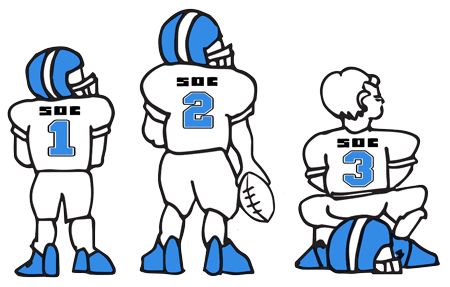ICFiles
SOC 2

Secure File Transfer Soc 2 starts at $1 per month
Understanding the Goodwill to Assets Ratio
General Business News
June, 2025
Understanding the Goodwill to Assets Ratio
 The goodwill to assets ratio measures how much of a company's total assets come from goodwill – an intangible asset like brand value or customer loyalty – and it plays a role in assessing the company's overall value. It provides a ratio or percentage of the amount of intangible versus tangible assets. Understanding what the ratio represents, how it is calculated, and how to interpret it is essential for effectively applying it to business operations and investment decisions.
The goodwill to assets ratio measures how much of a company's total assets come from goodwill – an intangible asset like brand value or customer loyalty – and it plays a role in assessing the company's overall value. It provides a ratio or percentage of the amount of intangible versus tangible assets. Understanding what the ratio represents, how it is calculated, and how to interpret it is essential for effectively applying it to business operations and investment decisions.
Goodwill Defined
Goodwill can be defined as an intangible asset that comes about when the acquiring firm obtains such assets from the acquired firm at a higher value. When it comes to accounting standards, both International Financial Reporting Standards (IFRS) and Generally Accepted Accounting Principles (GAAP), intangible assets must be evaluated for impairment, but don't need to be amortized. Based upon IFRS 38, goodwill is generated solely during an acquisition and is defined as the amount of the acquisition price for the acquired company over its book value. IFRS 38 does not recognize goodwill generated by the company internally.
Calculating Goodwill
Goodwill = Liabilities - Assets + Purchase Price
If a company looks at acquiring another company for $750,000, and the company being acquired has assets of $900,000 and liabilities of $450,000, the net assets would be $450,000. Based on the goodwill formula:
Goodwill = $450,000 - $900,000 + $750,000 = $300,000
Once the goodwill has been established, the Goodwill to Assets Ratio Formula is used as follows:
Goodwill to Assets Ratio = Unamortized Goodwill / Total Assets
If one company is putting itself up for sale with a selling price of $75 million, it would have to establish its book value, based on recent financial statements, along with its goodwill value. Factors that go into calculating a company’s goodwill include if the company has prime real estate, a well-known brand, a rich list of clients, or intellectual property that sets itself apart from competitors in the industry that won't expire for years. For example, if its intangible assets are $15 million, subtracted from its selling price of $75 million, its tangible assets or book value would be $60 million.
Based on the ratio, it's calculated as follows:
$15 million / $75 million = 20 percent
Therefore, the ratio is 20 percent for the company’s goodwill as part of the company's valuation. Otherwise, if the purchase goes through, whoever buys the company spends 20 percent on the company's goodwill.
Analyzing the Goodwill to Assets Ratio
This ratio gives an overview of a business's financial health. The lower the ratio, the more tangible or physical assets that can be sold. Conversely, the higher the ratio, the fewer intangibles a company has. Much like assets that can be written down, so can a company's goodwill.
This ratio is not one-in-all and should be measured against businesses within the same industry. Based on this analysis, if a company has a large amount of goodwill on its financial statements, if it's written down, it could still result in a lower valuation despite the company having a large amount of assets.
Looking over time, it shows the importance of ongoing evaluations. In 1975, according to the University of California, Los Angeles, companies on the Standard and Poor's 500 (S&P 500) had $122 billion of intangible assets and $594 billion of tangible assets, or about a 21 percent intangible to tangible assets ratio. These companies included most industrial and energy sector names like GE, Procter & Gamble, 3M, Exxon Mobil, along with IBM, based on market capitalization. However, in 2018, the ratio increased to 84 percent of intangible to tangible assets. Intangible assets accounted for $21.03 trillion and $4 trillion when looking at most of the companies on the S&P 500, which included Apple, Alphabet, Microsoft, Amazon, and Facebook, based on market capitalization.
While the growth of technology and communication services has risen and skewed the tangible to intangible ratio, it shows the importance of evaluating companies and sectors individually, not just with a broad brush.
Sources
https://anderson-review.ucla.edu/boom-of-intangible-assets-felt-across-industries-and-economy/
These articles are intended to provide general resources for the tax and accounting needs of small businesses and individuals. Service2Client LLC is the author, but is not engaged in rendering specific legal, accounting, financial or professional advice. Service2Client LLC makes no representation that the recommendations of Service2Client LLC will achieve any result. The NSAD has not reviewed any of the Service2Client LLC content. Readers are encouraged to contact their CPA regarding the topics in these articles.
Dynamic Content Powered by Service2client.com
SEO Content Powered by DynamicPost.net






